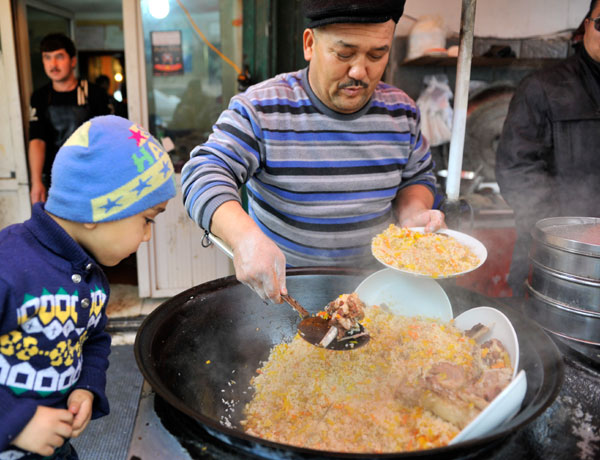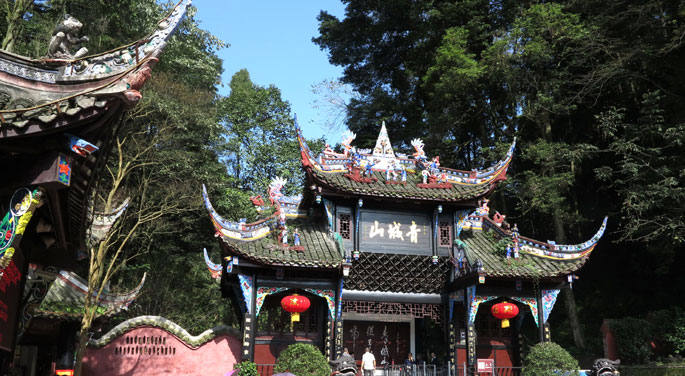Grilled to perfection
By Cui Jiain Urumqi ( chinadaily.com.cn ) Updated: 2014-11-13 15:37:04
 |
|
A Uygur child cannot wait to have the pilaf for lunch. [Photo by Han Liang/For China Daily] |
In 1985, archaeologists discovered two pieces of grilled lamb ribs on a red willow stick in a tomb in Qiemo county in Southern Xinjiang’s Bayingolin Mongol autonomous prefecture. He said the kawap dated back more than 2,700 years.
The archaeologists also found a small fan made of fur and wood in a tomb in Lop county in Southern Xinjiang’s Hotan prefecture in 1984. Aniwar said it could just be the tool used to grill kawaps.
"People still use similar fans to help the charcoal burn," he said.
Red willow is a common plant in the desert areas of Xinjiang and people still use them to make kawap, just like how their ancestors did 2,700 years ago. In Erdaoqiao, bundles of red willow sticks are popular items in small shops specializing in accessories for grilling kawap.
"The flavor of the red willow will be gradually released into the meat, giving the kawap a special flavor. It’s the most authentic and delicious kawap," Yasinjan said.
Not far from Yasinjan’s restaurant, businessman Bayiaji had no time for lunch because he was busy inspecting his workshop’s kawap grills before they were shipped to East China’s Shandong province and South China’s Shenzhen city.
The 39-year-old calls himself "king of the kawap grills" because he claims he can make the grills look like "traditional Uygur palaces".
Bayiaji’s business and craftsmanship in the iron kawap grills were passed from generation to generation. He now has plans to inject some innovative elements in the family tradition.
"I’ve been learning about the structure and domes of the palaces in Europe," he said.
"Soon, I will make European-style kawap grills."
|
|
|
|
|
|
|
|























 Raymond Zhou:
Raymond Zhou: Pauline D Loh:
Pauline D Loh: Hot Pot
Hot Pot Eco China
Eco China China Dream
China Dream China Face
China Face





